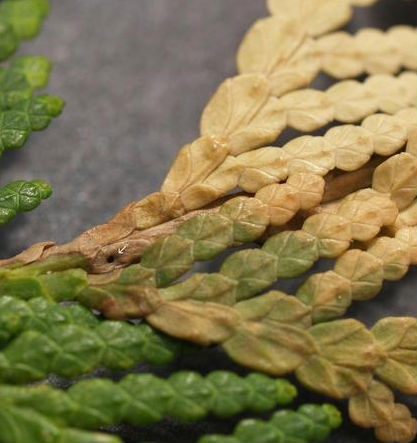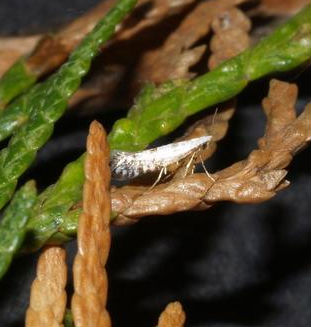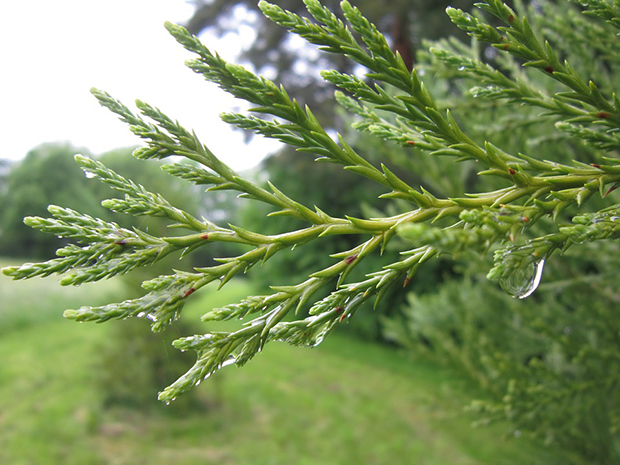
In spring, many arborvitaes have sustained damage after a harsh winter. The cold, sun and freeze-thaw pattern can combine in various ways to kill off some leaves. Before you assume the damage is winter damage, take a closer look at your arborvitae.
How can I tell if it’s Arborvitae Leafminer damage?
Is the damaged side facing the strongest sun or have the least protection from wind? That would probably indicate winter damage.
The leafminer enjoys a little shade and protection.
Is the damaged side facing some shade or have a Northern exposure? Is the damage mostly there or in the bottom branches where the sun and wind were least likely to hurt it? This may indicate leafminer.
Will the plant die? Very unlikely, but the arborvitae can look unattractive and will get worse without action.
What can I do about it? Remove the affected leaves and destroy them. Continue to do so as branch ends look dead. Do not compost them!
How did my plant get leafminers? Last May, adult Arborvitae leafminers were present on the plant. They laid eggs in late May; the larvae overwintered in the leaves and are continuing to feed this spring. New adults will emerge soon if they haven’t already.
Why did my plant get leafminers? Out in nature, the Arborvitae Leafminer has a natural enemy, the parasitic wasp. These tend to be less present when the plant is a specimen away from the woods.

Here’s the cycle:
Late May – Early June Adult leafminers hatch. They look like tiny white or silver moths and are easily seen on the plant if you shake the branches. They stick around to lay eggs on the leaves.
June – Fall Larvae will burrow into the scales of the leaf and “mine” the nutrients there. Damage will begin to show by browning branch and branchlet tips and working down toward the trunk.
Fall The worst damage will now be obvious.
Winter The larvae will overwinter in the leaves and continue to feed in the spring.
Spring More damage will be evident. In late May the cycle begins again.
Leafminer photos from Maine Dept. of Agriculture, Conservation and Forestry.

